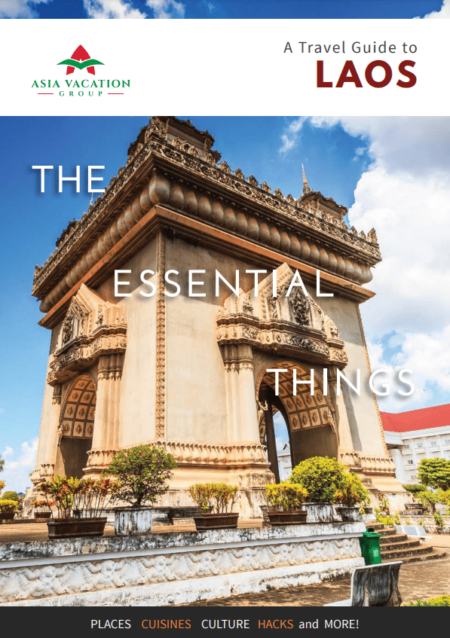Transportation in Japan: Everything you need to know
Japan is famous for its efficient and high-speed train network that connects various parts of the country. The transportation system, including trains, buses, and taxis, offers convenient travel within tourist destinations. For a long-distance trip, you can use shinkansen and planes.
Tokyo Station (Japan) is a major railway station in Chiyoda, Tokyo, Japan.
But when you’ve just arrived in Tokyo (or worse, Shibuya), it’s still easy to get lost in the system simply because of the sheer scale of everything. From a vast network of trains, subways, and buses, you might wonder just how easy and convenient it is to use them. Should you hail a cab in Japan, or rent a car instead? Here is a useful list of the different types of public transportation in Japan and their advantages.
Japan Rail Pass
When deciding the best travel option, you will also want to know about the price. Japan’s public transportation is known for its reliability and safety, but also expensive. As an international tourist, however, you have the advantage of the Japan Rail Pass, also known as the JR Pass. You can travel for some days on various modes of transportation within the Japan Rail Group, including shinkansen, trains, buses, and even ferries. Read more about how the Japan Rail Pass works and how it can help you save money.
Japan Rail Pass is a ticket offered convenient and reasonably priced for traveling throughout Japan by train.
IC Cards
If you do not use the Japan Rail Pass, it is advisable to get an IC card. An IC card makes it possible to travel on virtually all trains, subways, and buses in the bigger cities in Japan. IC cards are chargeable, prepaid cards for public transportation, but they can also be used in vending machines, shops, Konbini, and even restaurants. Suica, Pasmo, and Icoca are among the most popular IC cards. You can buy IC cards at train stations by using ticket machines or at ticket counters. Some IC cards offer a special card for international tourists.
Suica, Pasmo, and Icoca are among the most popular IC cards.
Train
Trains are the most popular and convenient way to travel around Japan. Luckily, the train system in Japan is extensive, particularly in major cities such as Tokyo and Osaka. The Japan Railway Group (JR) is the biggest railway company and manages about 70% of Japan’s railway network around the country. The other train lines in Japan are operated by private railway companies.
Trains in Japan are known to be very punctual. You can always expect trains to arrive on time except in case of some unusual situations such as accidents or troubles caused by natural disasters like typhoons. In Tokyo, the majority of the trains come every few minutes!
Trains in Japan are very punctual and reliable.
Taking a train in Japan offers a unique experience. Trains tend to be remarkably quiet, as everyone is supposed to keep quiet and refrain from talking on their phone on trains. This contributes to a comfortable atmosphere, even during rush hours. However, it’s advisable to avoid trains during rush hours when they become crowded with people commuting to work or school. In Tokyo, you might even see station workers assisting in managing crowds by guiding people onto trains and closing doors during rush hour: 8-9 AM. and shortly after 5 PM.
Remember to observe the standard etiquette inside the train:
- Stand behind the yellow line when waiting to board the train.
- Wait for passengers to exit first
- Avoid eating
- Refrain from talking on your mobile phone.
- Avoid putting on make-up.
- Avoid taking up more room than required.
Subway
Subway is considered one of the main parts of train networks in Japan. You can easily find subway stations, particularly in big cities such as Tokyo, Osaka, Nagoya, and Kyoto. They extensively cover various key areas, including shopping districts, business hubs, and popular tourists.
Similar to trains, Japanese subways are renowned for their punctuality and efficiency.
Another advantage of the subways is that they are less affected by adverse weather conditions such as typhoons. Operating from early morning, around 5 am, until midnight in major cities, subways offer a reliable and convenient mode of transportation.
Much like trains, some subway systems provide women-only cars, easily identified by the pink signs on the platform. This option enhances safety and comfort for female passengers during their commute.
City bus
Bus networks in Japan contribute significantly to providing a convenient means of transportation. In large cities and developed areas, the extensive bus network serves various purposes, including commuting, shopping, sightseeing, and more. This diverse range of bus services enhances the accessibility and flexibility of travel options for residents and visitors alike.
Bus is used widely as an essential transportation service for locals and the elderly in countryside.
At bus stops, you can easily find their schedules and routes. The fare is usually relatively cheaper than other modes of public transportation. In addition, you can tap your IC card or pick up a paper ticket from the small machine by the door if you intend to pay with cash. The bus will announce each stop. When you hear your destination, press the button found along the side of the bus to let the driver know you will be getting off.
Taxi
Taking a taxi in Japan is often considered the most expensive mode of transportation, especially in terms of distance-to-price ratio. However, it can be a convenient choice if you miss the last train or bus, as public transportation services, particularly trains, usually cease operations around midnight. Taxis offer a flexible and comfortable option, especially when you’re too tired to walk or need a direct and convenient route to your destination.
If you see the word “空車 (kuusha)” which means “Vacant car”, that’s when you know you can call it. Simply raise your hand, and the taxi will stop for you. The passenger doors are operated by the driver.
To tell them where you want to go, you can say:
(Place)までお願いします。
(Place) made onegai shimasu
To (place), please.
You can look for taxis at train stations, as they have a designated waiting area (there’s usually a “Taxi” sign). You can also use apps like Didi, GO, S.Ride, and Fulcul, but they’ll be more expensive!
Tips are not required when you take taxis in Japan.
It’s easy to hail a taxi at the train station or flag one down along the street. Like in other places, the taxi will have a light indicating whether it is free or taken. There are also apps that you can use to reserve a taxi such as JapanTaxi and DiDi! Uber also exists in Japan, though Uber taxis tend to be more expensive in Tokyo and there are just a few. If you speak some Japanese, you can also call the taxi company if there is no taxi available in the area. Be aware though that taxis tend to get very expensive quickly, but the good news is tips are not required when you take taxis in Japan and most taxis accept payment by card or even IC cards like Suica or Pasmo.
In Japan a red light means available, whereas green means occupied.
Shinkansen
The iconic shinkansen, commonly known as the bullet train, stands out as a symbol of Japan. This high-speed rail system has been the primary mode of transportation that takes everyone around the country with comfortable rides and professional services. There are altogether 9 Shinkansen lines. The most profitable and busiest one is the Tokaido Shinkansen which connects the major cities of Tokyo, Yokohama, Nagoya, Osaka, and Kyoto. Riding the shinkansen is without a doubt a must-do when traveling in Japan!
Tokaido Shinkansen (Tokyo, Yokohama, Nagoya, Osaka, Kyoto).
You can purchase a shinkansen ticket from JR ticket counters called Midori-no-Madoguchi (みどりの窓口), ticket machines or online. Luckily, most of them have English options, so even if you don’t know a lot of Japanese, you can still navigate them with ease.
Shinkansen tickets come in two types: non-reserved and reserved seat tickets (make sure you double-check and read your tickets carefully!). Reserved seats are more expensive, but you’ll be guaranteed a spot throughout the journey. For non-reserved, this means you’ll be in the non-reserved cars and wait in line. It’s also not possible to ride a shinkansen using your IC card.
Highway and Long-distance Bus
A highway bus is a special bus that takes passengers to their destination via highways, sometimes overnight. It’s a reasonable option to travel long distances for a low amount of money. In major cities such as Tokyo and Kyoto, buses are a great way to explore the city at a slower pace and to visit more out-of-the-way locations that may not be accessible by train or subway.
Many tourist destinations also offer sightseeing buses that allow visitors to see the main sights of the city in one trip.
Experience the Highway Bus in Tokyo and Kyoto with our 12 Day Wonderful Japan
You can book special seats with luxurious chairs and enough space to relax. Some seats have curtains or walls that offer privacy even when you need to spend a night on the overnight buses. Taking night buses also helps you start your trip efficiently as they are usually scheduled to arrive at the destination early in the morning.
Plane
If you plan to explore beautiful islands or remote areas in Japan, taking domestic flights will probably be a reasonable option. The two major Japanese airline companies, ANA and JAL, along with several low-cost carriers specializing in affordable domestic flights, offer convenient options. Sometimes, you may even find flight tickets cheaper than shinkansen, making it a preferred mode of transportation for your trip.
High-quality customer service & a range of (cheap) fares depending on airline companies
One significant advantage of flying is the ability to reach remote areas while saving considerable time. It opens up access to special places, such as Okinawa, that are only reachable by planes. You can expect high-quality customer service as well. In big cities including Tokyo, and Osaka, there are major airports such as Narita (成田国際空港) and Kanku (関西国際空港) that serve as a gateway to both international and domestic flights.
Conclusion
There you have it! Unless you’re thinking of traveling around Japan, buses, and trains are typically enough to go about your daily life in Japan. Shinkansen can be more expensive than domestic flights, but it’ll be a good experience!
If you’re interested in traveling to Japan with Asia Vacation Group, we ensure you have a good seat, reasonable prices, and a comfortable experience to navigate the country.
Recommended article: Japanese language: 20 most important expressions when traveling











































 planning
planning